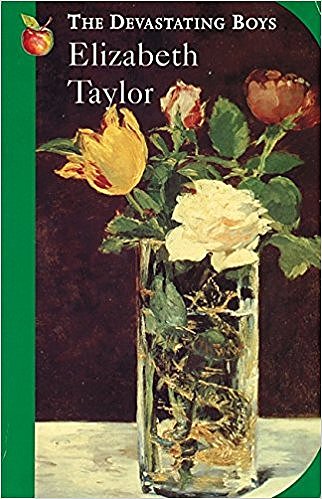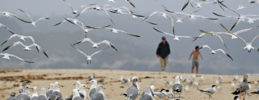
('Window Sill' © I Love Butter, 2006)
THE OTHER ELIZABETH TAYLOR
by NICOLA DALY
When you tell people that Elizabeth Taylor is one of your favourite short story writers they look upon you a little strangely. The name automatically conjures up images of the glamorous actress, twice married to Richard Burton. People do not immediately think of the writer by the same name, whom Kingsley Amis once described as being one of the best English novelists of the 20th century. Many of those who have heard of her, however, view her work as narrow and parochial, regarding her as a cosy writer for middle class women whose stories are only about jumble sales and life in the WI. Anthony Burgess once disparaged Taylor’s preference for domestic settings in her work as being so very English. And it’s true; Taylor does deal with miniscule, everyday problems. She was not an egotist and she knew her limitations. She wrote within her experience. But these little concerns are only part of the story. By using the domestic setting as a backdrop to her stories, Taylor ensures that they are still as relevant today as when they were written.
 Elizabeth Taylor’s stories may be peppered with the ups and downs of marriage and family life, however she writes about these subjects exquisitely. She is a writer who follows the rules of writing to the letter but this does not make her work any less interesting because her short stories are not all that they at first appear. Taylor is a clever writer who created stories with multiple layers which appeal to a wide audience. Her stories can be taken at face value, but careful readers will also find wry observations about the English middle class of the time. Post war Britain underwent huge social and economic changes and nobody felt the strain more acutely than the middle class. Taylor recorded these changes in collections like The Devastating Boys which brought together topics such as extra martial affairs, adoption and racial equality.
Elizabeth Taylor’s stories may be peppered with the ups and downs of marriage and family life, however she writes about these subjects exquisitely. She is a writer who follows the rules of writing to the letter but this does not make her work any less interesting because her short stories are not all that they at first appear. Taylor is a clever writer who created stories with multiple layers which appeal to a wide audience. Her stories can be taken at face value, but careful readers will also find wry observations about the English middle class of the time. Post war Britain underwent huge social and economic changes and nobody felt the strain more acutely than the middle class. Taylor recorded these changes in collections like The Devastating Boys which brought together topics such as extra martial affairs, adoption and racial equality.
While The Devastating Boys is a strong collection, there is one story which feels strangely out of place. ‘The Fly-Paper’ is a cautionary tale which seems as if it would be more at home among the stories of Stephen King than with the ladies of the WI – so much so that it was turned into a screenplay for Tales of the Unexpected in the nineteen eighties.
‘The Fly-Paper’ does what every good horror story does in that it takes regular people and everyday situations and shows the audience what they already know could happen. The story plays on the rational fears of the reader and this is perhaps one of the reasons it’s so entertaining.
Taylor starts the story slowly by introducing us to Sylvia, an unhappy young orphan with a ‘docile manner’ who is having a very hard time: ‘Since her mother’s death Sylvia had grown very glum and sullen.’ Sylvia lives with her grandmother whom Taylor depicts as less than sympathetic. In fact the grandmother appears to be something of a tyrant, insisting that Sylvia wears her winter coat, though it is far too warm, ‘just as she insisted on the music lessons’.
There is nothing cosy about ‘The Fly-Paper’, lacking as it does the soft edges of some of Taylor’s other works. The grandmother hates being saddled with a child at the time in life when she wishes to enjoy her retirement. There is also a sense that she doesn’t understand Sylvia’s generation, a common theme in fiction of the ninety seventies: Sylvia ‘was filled by misery; for there seemed nothing in her life now but acquiescence to hated things, and her grandmother’s old ways setting her apart from other children.’
Taylor takes us straight into the action with a situation we can relate to: on the way to her music lesson, Sylvia is pestered by a strange man on the bus. He catches Sylvia’s eye as he sings and then tries to engage her in conversation. Taylor skilfully makes the reader aware of Sylvia’s neglected appearance, suggesting, perhaps, that she would make the perfect victim:
She was a plain child, plump, mature for her eleven years. Her greasy hair was fastened back with a pink plastic slide; her tweed coat, of which, last winter, she had been proud, had cuffs and a collar of mock ocelot. She carried beside her music case a shabby bag that had belonged to her mother.
 Taylor deploys all her skill when it comes to showing the man’s persistence in pursuing Sylvia in conversation about her name, her music lessons and the weather but she is careful to show us that the child feels embarrassment rather than fear at this stage: ‘She was embarrassed not nervous, not nervous at all, here in the bus with other people in spite of all her grandmother had told her about talking to strangers.’
Taylor deploys all her skill when it comes to showing the man’s persistence in pursuing Sylvia in conversation about her name, her music lessons and the weather but she is careful to show us that the child feels embarrassment rather than fear at this stage: ‘She was embarrassed not nervous, not nervous at all, here in the bus with other people in spite of all her grandmother had told her about talking to strangers.’
Taylor is adept at suspense. She has the ability to pace the story in such a way that as the action unfolds we share the experience alongside Sylvia and feel the same range of emotions she does. As readers, we think we know what is going to happen because we are familiar with the situation. Like Sylvia, we deem this man to be eccentric rather than harmful. This ability to lead her audience in the wrong direction demonstrates Taylor’s skill as a writer. This is the very reason that I caution readers not to underestimate her as so many have done before.
When Sylvia gets off the bus she thinks all is now well. She considers buying an ice lolly at a nearby shop but then finds her path barred by the strange man from the bus. Now, Sylvia’s former embarrassment now turns to fear. As readers we are initially unsure what to make of this change. Taylor has already shown us that Sylvia tends to overreact: ‘Since her mother’s death, her life had taken a sharp turn for the worse, and she could not see how it would ever be any better. She had no faith in freeing herself from it, even when she was grown-up.’
When a woman who was also on the bus intervenes and takes Sylvia back to her cottage for a cup of tea we begin to begin to relax. But though Sylvia is now safe, Taylor has us hooked and we still need to know the child’s fate. We are, however, unprepared for what is to come.
We sense the girl’s relief as she walks home with this homely, comforting woman who is everything she would like her grandmother to be: ‘I’m going to give you a nice cup of tea, and make sure you are all right,’ the woman tells her. ‘Don’t you worry.’
Taylor creates a fairy tale quality as she first describes the pair walking through an overgrown waste land of disused gravel pits, and then entering the gate of the ‘little red brick house at the edge of the waste land’, which though ‘ugly’ is surrounded by hollyhocks and decorated with ‘frilly, looped-up curtains’ and plastic flowers. The old woman appears sweet. She has a pet budgie which she dotes on and her house is clean. It is a stark contrast from the house where Sylvia lives which is ‘dark and cluttered’, and the reader is given the impression that Sylvia feels she has at last found a safe haven from her grandmother and the outside world.
Even as we enter the last part of the story we don’t see what is coming and this is what makes the story so utterly brilliant. The audience does not sense that anything is wrong until Sylvia glances up and sees the fly-paper hanging in the window, ‘the only disconcerting thing in the room’ with some of the captured flies ‘still half-alive, and striving hopelessly to free themselves’. Then Sylvia hears the heavy footsteps coming up the path and we know that she, like the flies, is trapped. As Sylvia sees the man from the bus come into the kitchen, she is filled with horror – as are we. The man commends his wife on her quick thinking, and Sylvia, still not fully understanding how truly wicked the world is, turns to question the woman who has until this point offered her protection. The more the child flounders, too afraid to sit down, the more one understands Taylor’s great ability as an observer of life and the middle class. If Sylvia were not such a well brought up child she might have screamed and fought to free herself. We already know from the woman’s earlier comment about ‘all the things you read in the papers’ that predators exist, and here, in her portrayal of a well-behaved Sylvia, Taylor questions the wisdom of over protecting children to the point where they lack good judgement.
The story ends abruptly with an image of a horrified Sylvia confronting the kitchen table where three places have already been set, and the woman’s impatient command: ‘Well, sit down, do…It’s all ready.’
Taylor entrusts the true horror of the situation to the imagination of her audience and we can see it all too clearly.
When you consider a story like this it is impossible to see Taylor as merely a writer of trite middle class tales. ‘The Fly-Paper’ illustrates her overall skill: she paces the story perfectly and creates a memorable and clever plot driven by believable characters. But the really marvelous thing about Taylor is her ability to surprise. Many readers open her stories already sure of where the journey will take them, only find the story veering off in a totally different direction. And that is the allure of the other Elizabeth Taylor.
~
Nicola Daly has had poetry and prose published in magazines such as The North, The Rialto, Myslexia and many more. Her short stories have appeared in publications such as Honno Anthologies and Stinging Fly. In 2017 she came third in the Welsh Writing Awards organised by the New Welsh Review.



Great to see this article here. I’ve read only The Blush by Taylor, and thought it tremendous! You’ve encouraged me to find, and read, more! Mike Smith